angular kinematics
1/39
There's no tags or description
Looks like no tags are added yet.
Name | Mastery | Learn | Test | Matching | Spaced |
|---|
No study sessions yet.
40 Terms
sagittal plane
divides body into left and right

frontal plane
divides body into front and back

transverse plane
divides the body into superior and inferior parts
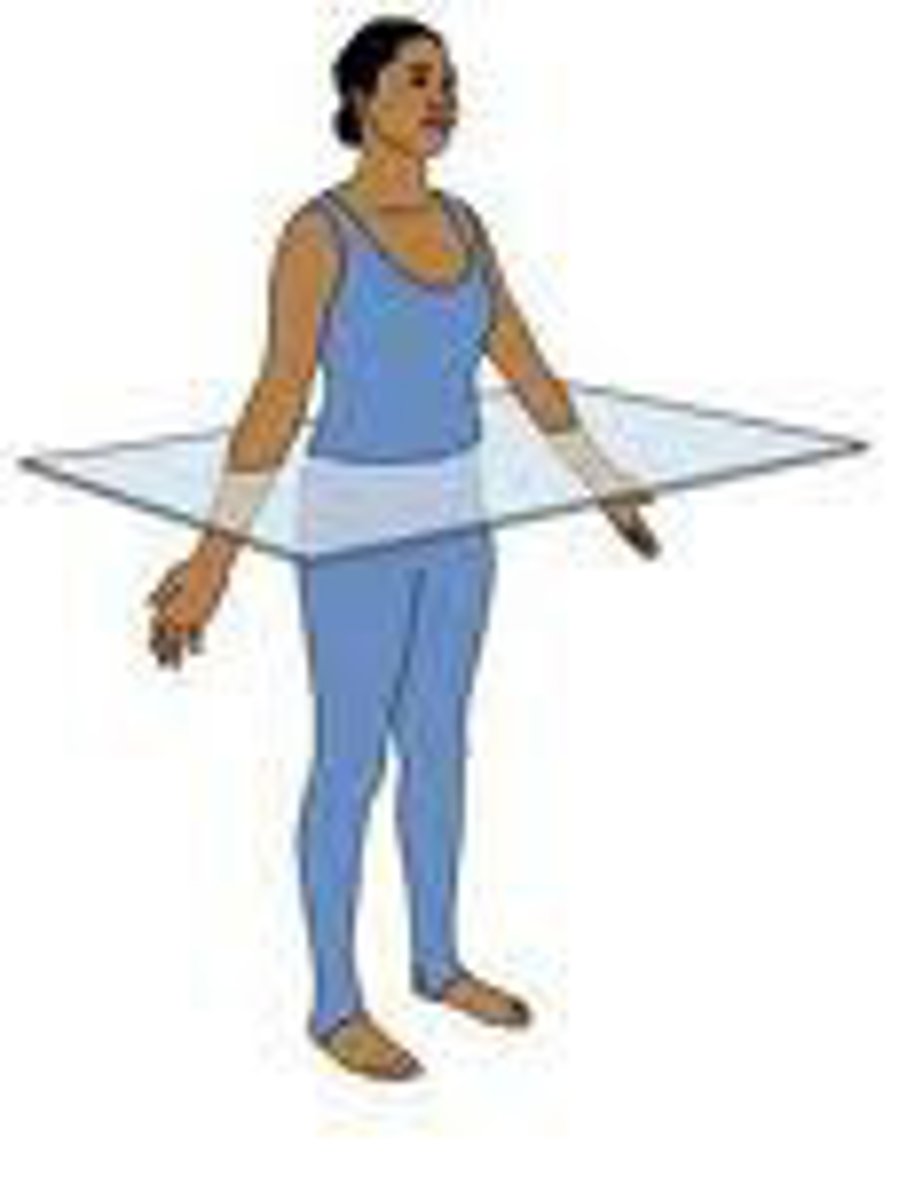
medial-lateral axis
horizontally oriented; passes through body from side to side; perpendicular to sagittal plane

Sagittal plane movements
rotates around the medial-lateral axis
Ex.: flexion, extension, hyperextension, dorsiflexion, plantar flexion
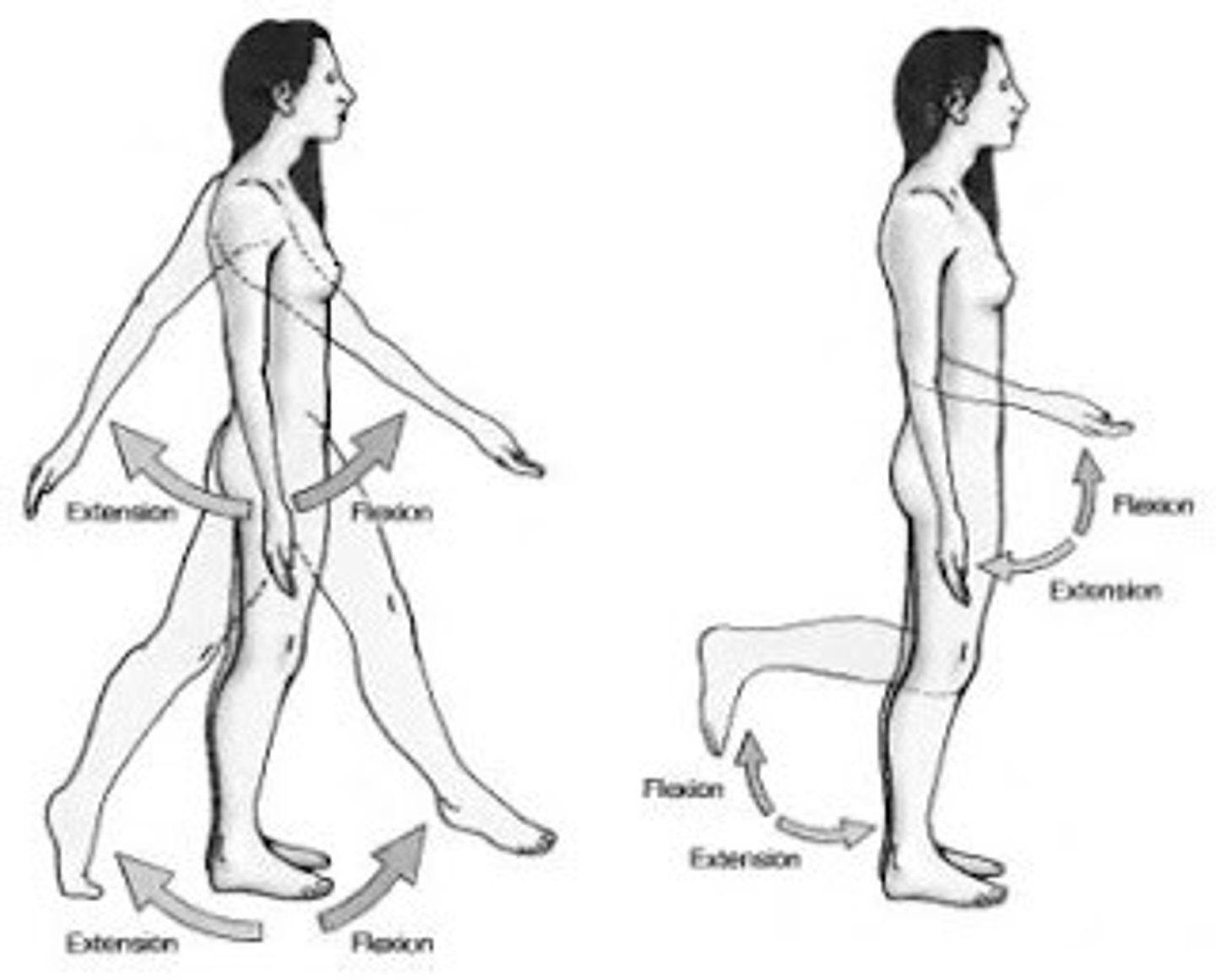
anterior-posterior axis
perpendicular to frontal plane

longitudinal axis
perpendicular to transverse plane
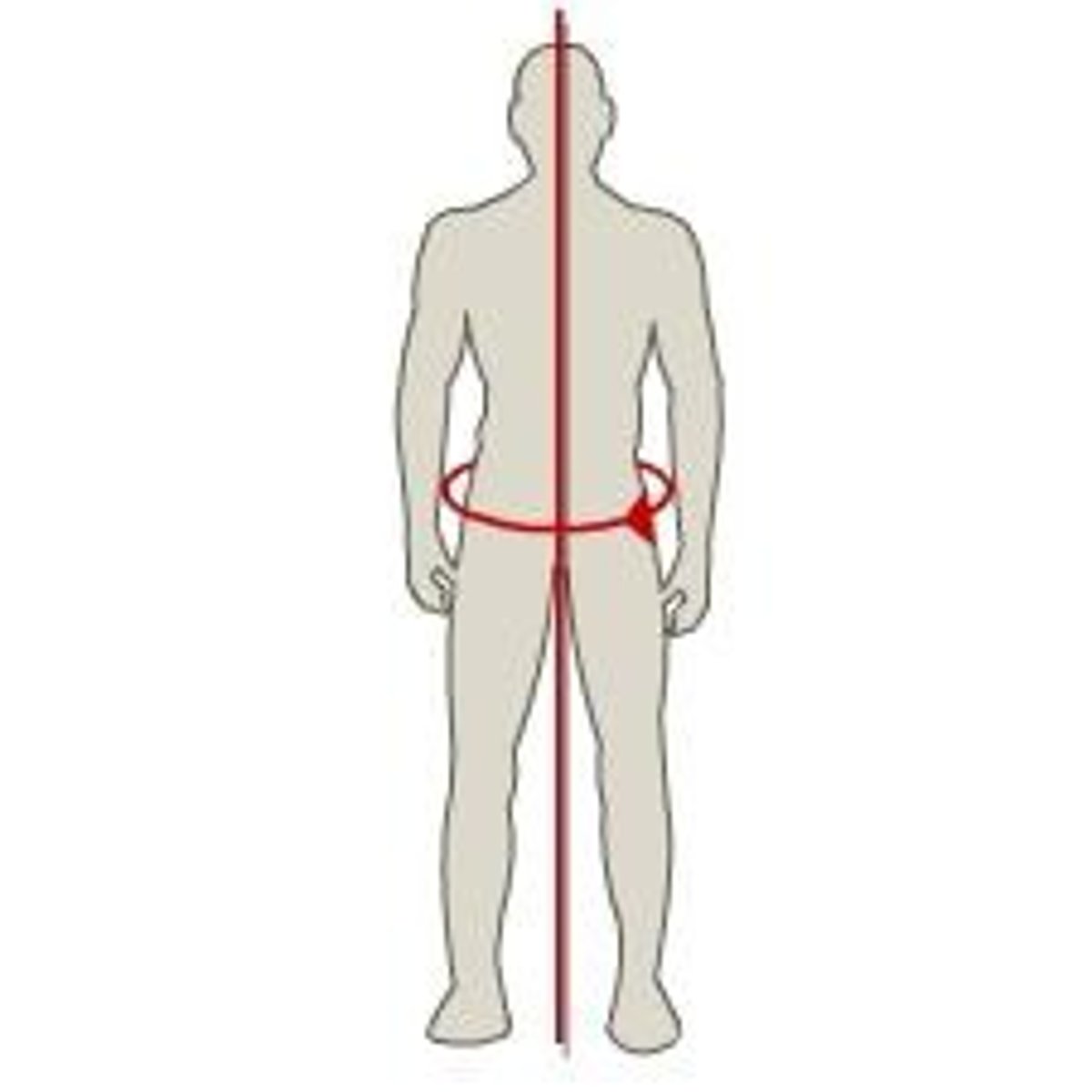
Frontal plane movements
rotates around the anterior-posterior axis
Ex.: Abduction, adduction, lateral flexion, wrist radial/ulnar deviation, ankle inversion/eversion, knee and elbow valgus/varus
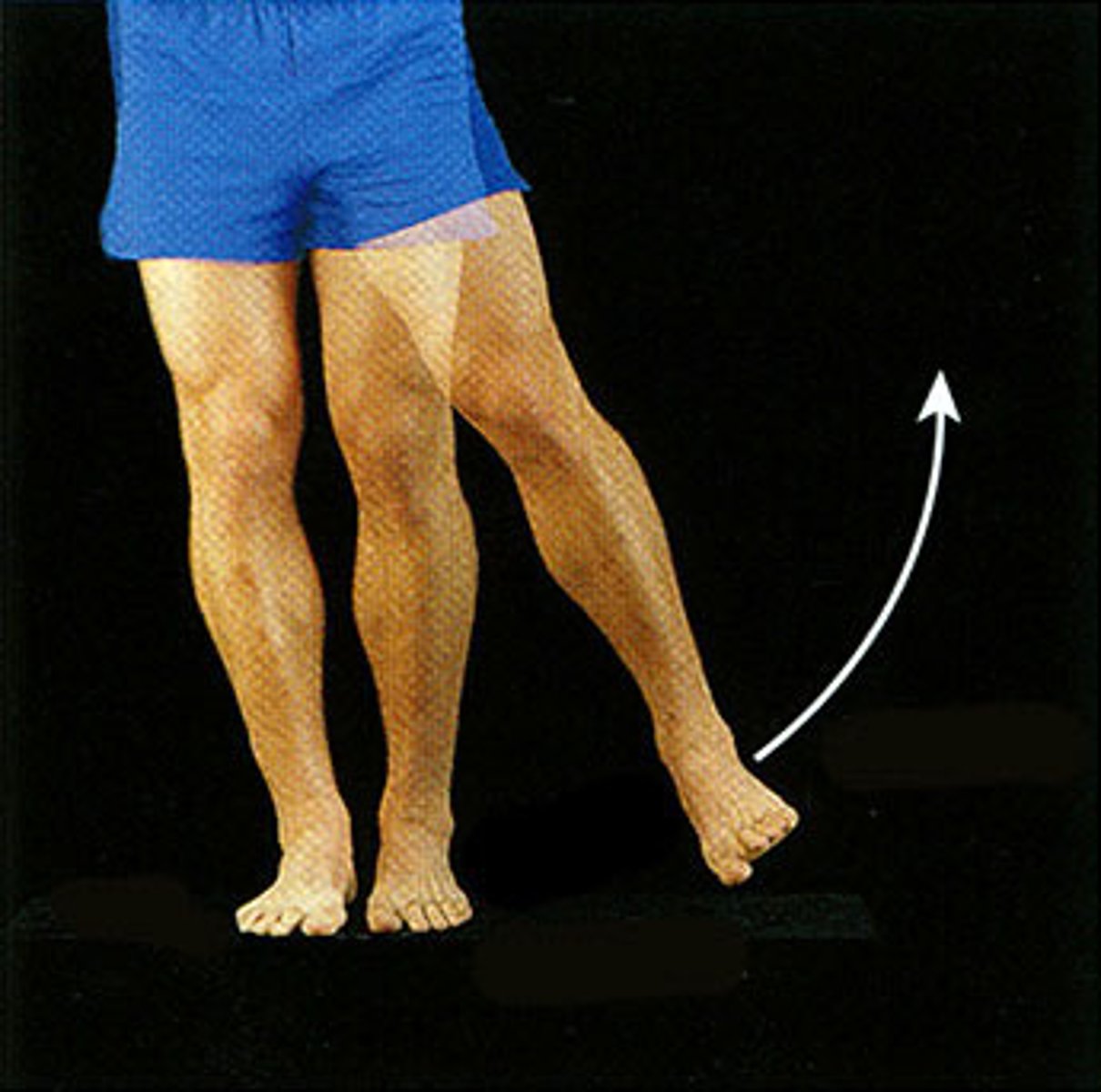
Transverse plane movements
rotates around the longitudinal axis
Ex.: Internal/external rotation, right/left rotation,forearm supination/pronation, shoulder horizontal abduction/adduction
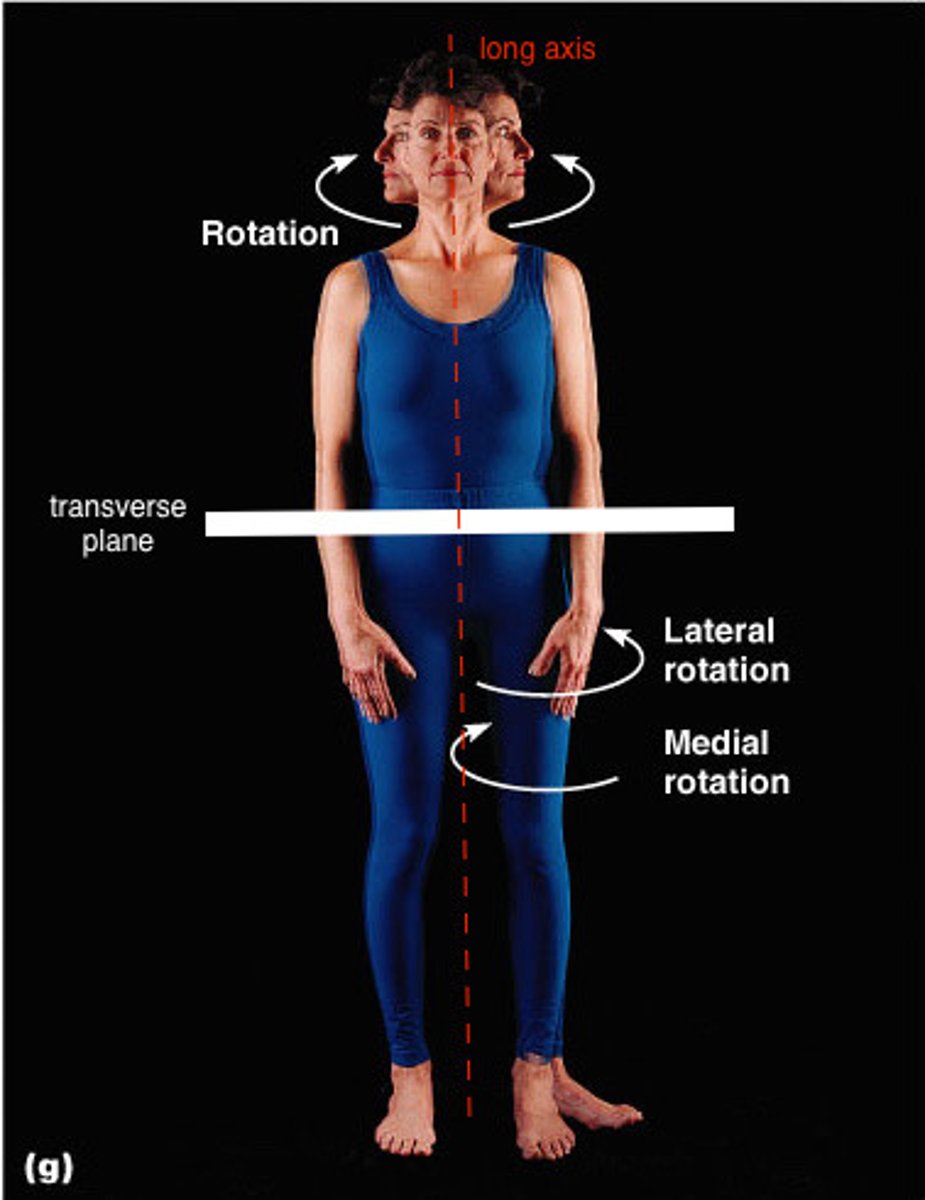
angular distance
how far the point rotated around the axis (scalar)
angular displacement
how far the point rotated around the axis in a specific direction (vector) (+ or -)
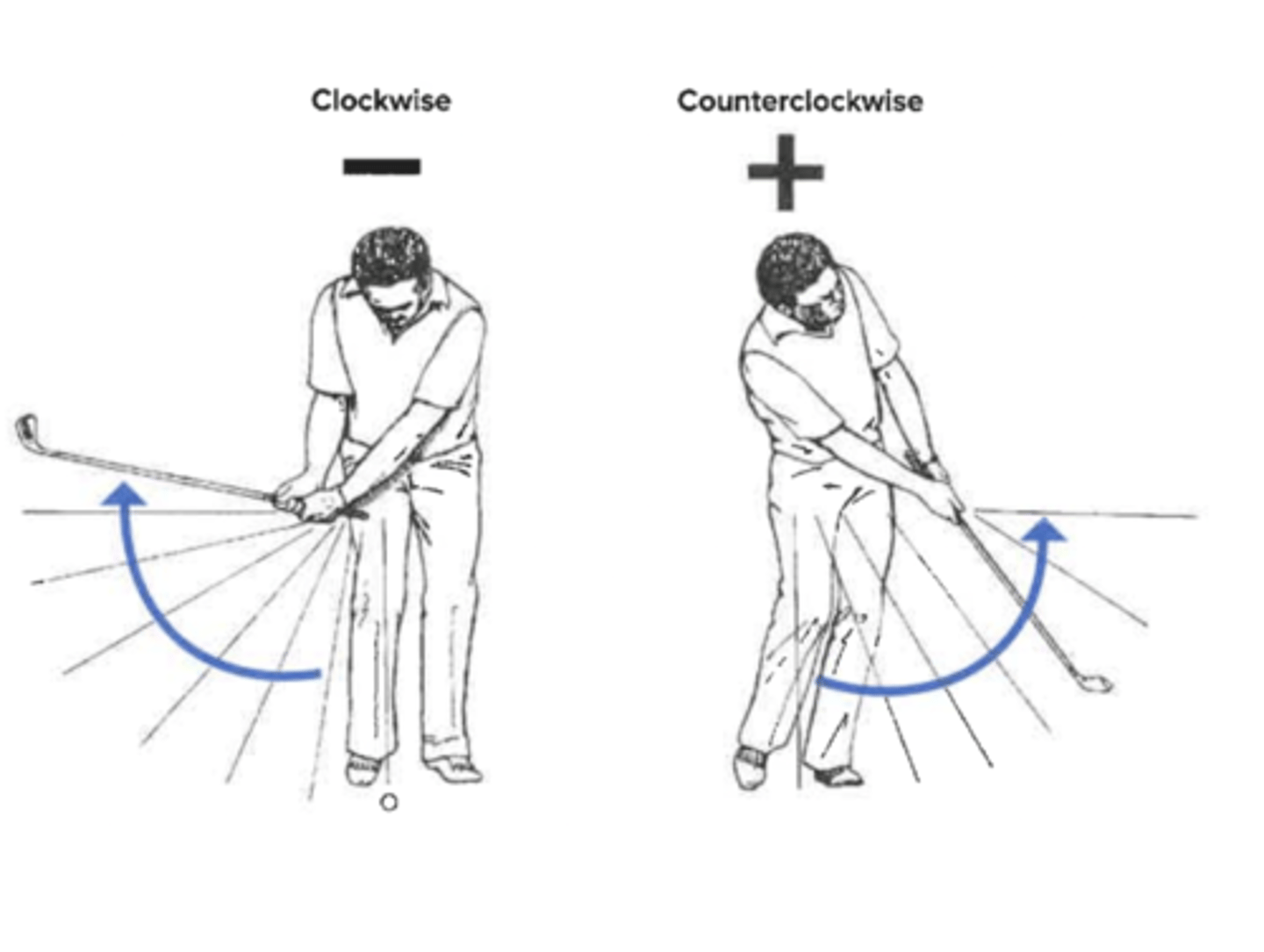
angular speed
how fast the point is rotating around the axis
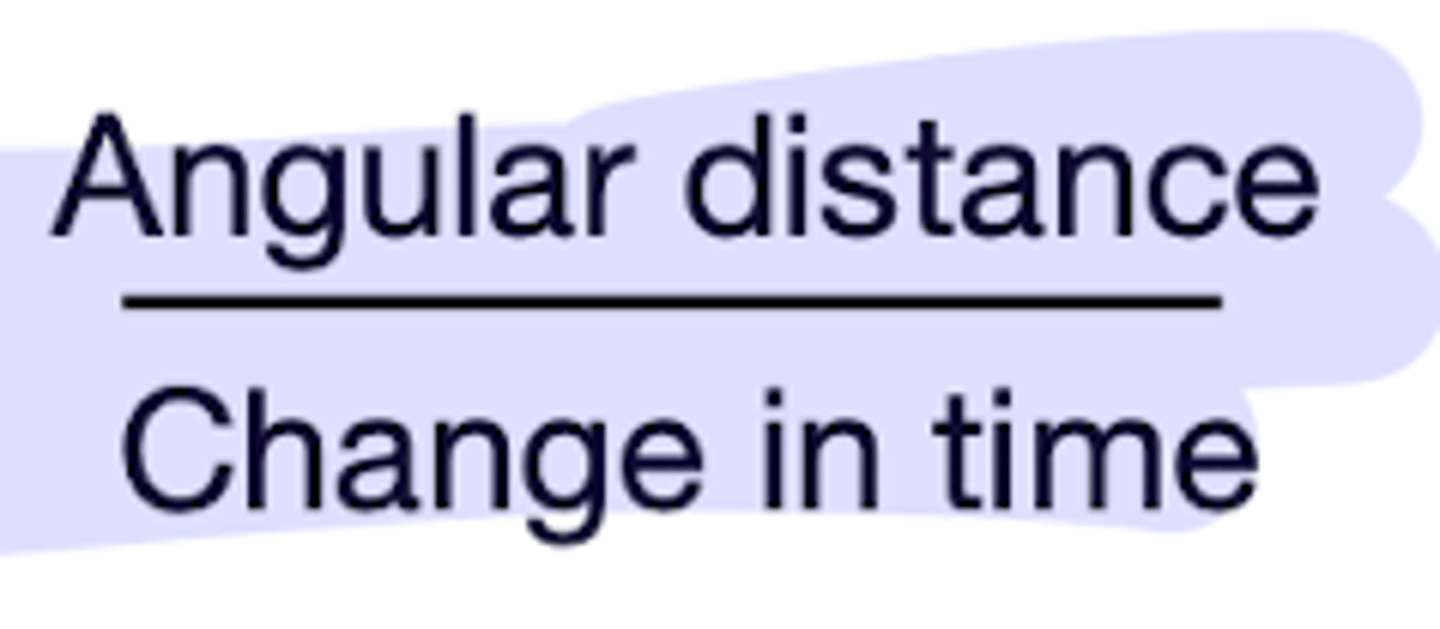
angular velocity (w)
how fast the point is rotating around the axis in a specific direction

sign of velocity indicates
direction (clockwise or counterclockwise)
clockwise (sign of velocity)
- (negative)
counterclockwise (sign of velocity)
+ (positive)
tangential velocity (V)
Velocity that is parallel (tangent) to a curved path.
V=wr

radius of rotation (r)
the distance between the axis of rotation and the point of interest on a system
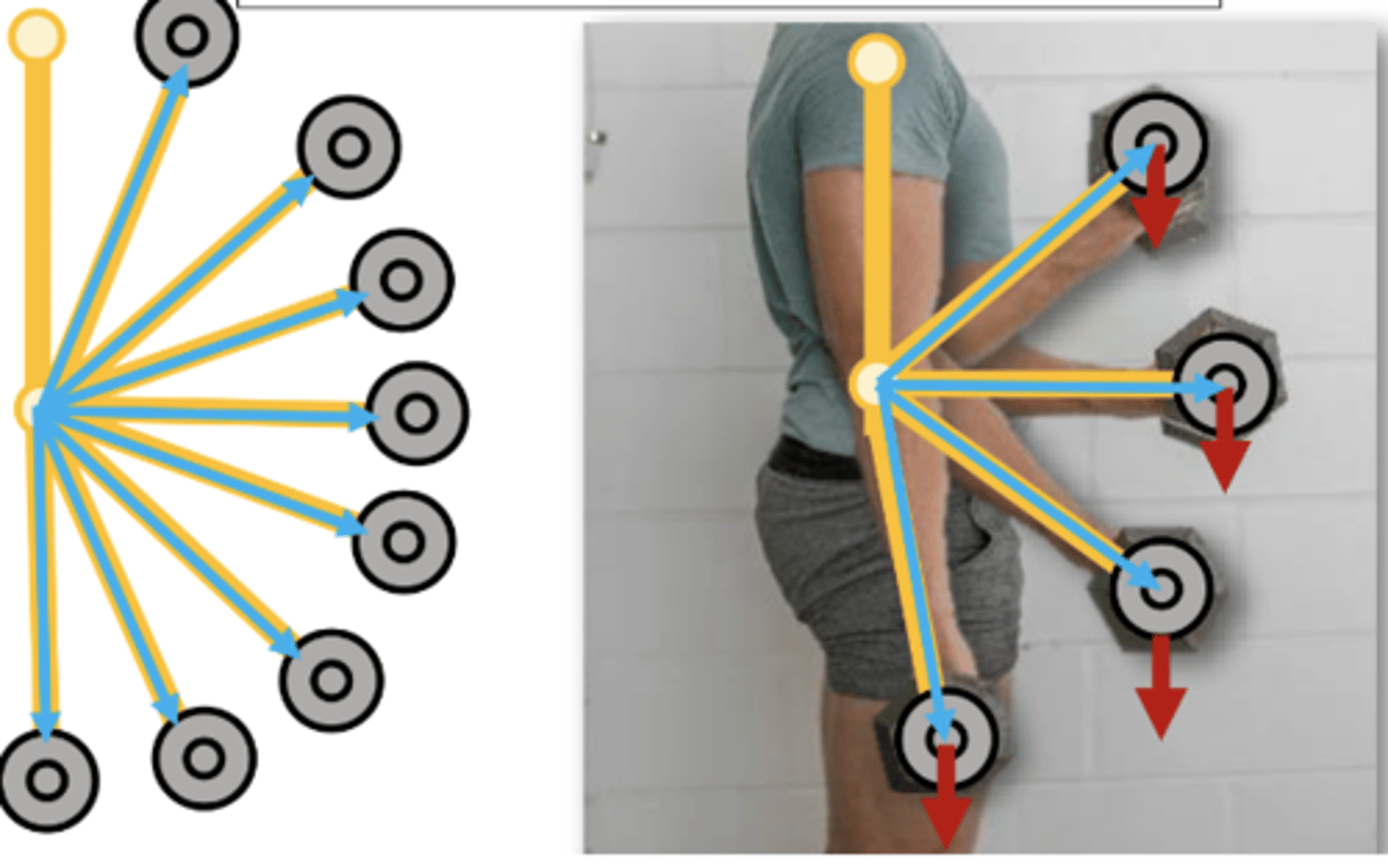
greater the tangential velocity
greater the angular velocity and longer the radius of rotation

advantages of a longer limb when throwing
longer radius of rotation → greater velocity → farther distance
the greater the angular displacement
the greater the tangential displacement
tangential displacement (vector)
how far the point rotated around the axis in a specific direction (+ or -)
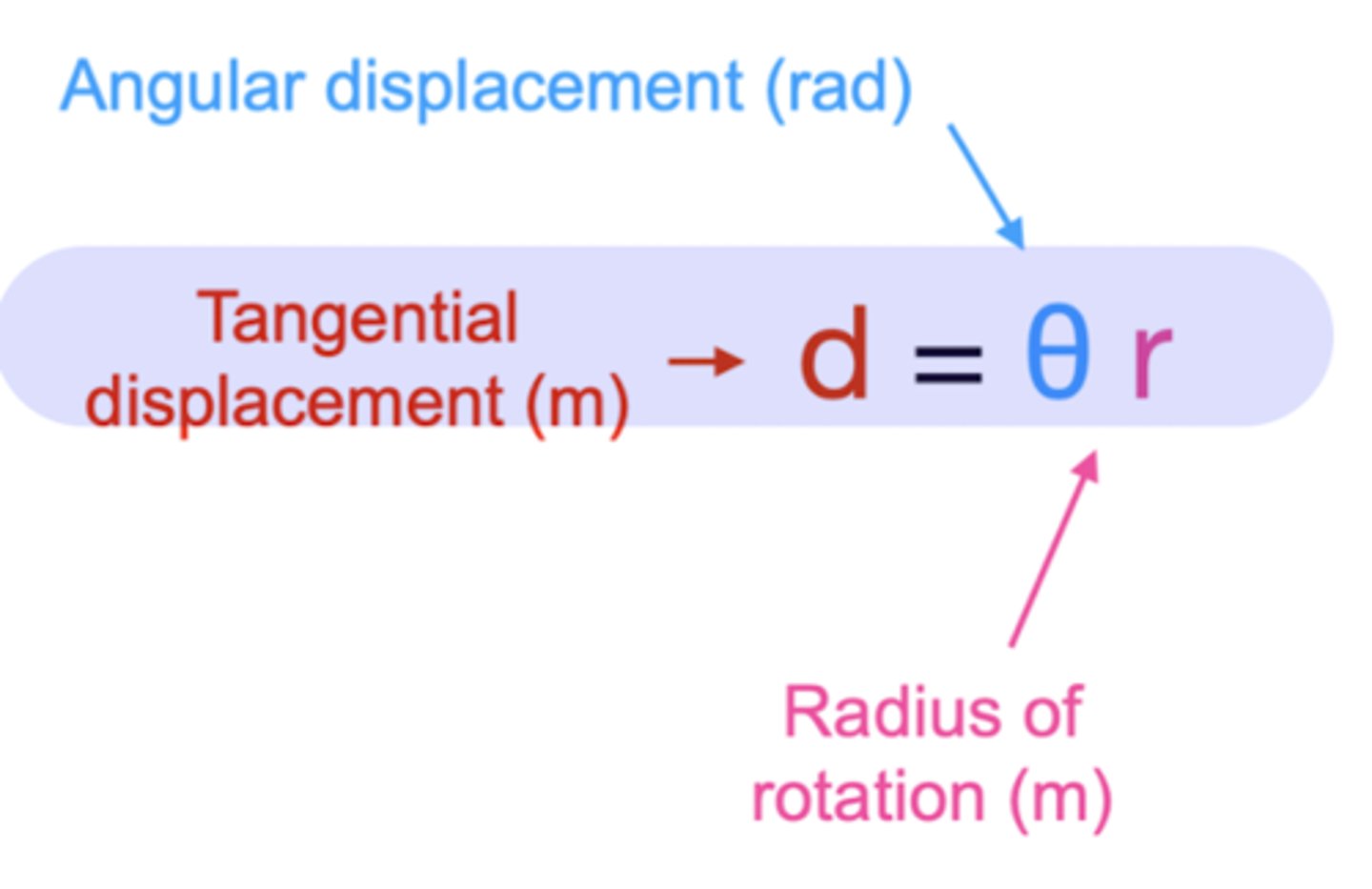
tangential acceleration
linear acceleration in the tangential direction (rate of change in magnitude of velocity)

tangential acceleration increases
increasing angular acceleration or radius of rotation

radial acceleration
rate of change in direction of velocity
radial acceleration direction
towards the center of rotation
factors effecting radial acceleration
swinging the object and turning the corner
factors of swinging the object and increasing radial acceleration
angular velocity and radius of rotation increase

factors of turning the corner and increasing radial acceleration
angular velocity increases and the radius of rotation (turning radius) decreases

centripetal force
a force that acts on the center around which the object is moving.
radial acceleration and centripetal force relationship
greater radial acceleration, the greater the centripetal force needed for object to stay in circular path
centripetal force increases as
radial acceleration and mass of object increases
Wide-Grip Bench Press Elbow
Name of Motion: Flexion/Extension
Plane/Axis: Sagittal/Medial-Lateral Axis
Primary Active Muscle: Triceps Brachii
Wide-Grip Bench Press Shoulder
Name of Motion: Horizontal/Abd/Adduction
Plane/Axis: Transverse Plane/Longitudinal Axis
Primary Active Muscle: Pectoralis Major
Closed-Grip Press Elbow
Name of Motion: Flexion/Extension
Plane/Axis: Sagittal/Medial-Lateral Axis
Primary Active Muscle: Triceps Brachii
Closed-Grip Press Shoulder
Name of Motion: Flexion/Extension
Plane/Axis: Sagittal/Medial-Lateral Axis
Primary Active Muscle: Pectoralis Major
A patient moves their elbow through +60 degrees of extension over 4 seconds. What was the average angular velocity of the elbow during this time?
60/4
How fast the golf club was rotating at the time of ball impact:
Golf: Instantaneous
How fast the figure skater was spinning during the jump:
Figure Skating: Average
The fastest angular velocity the pitcher’s arm reached during the pitching motion:
Pitching: Instantaneous